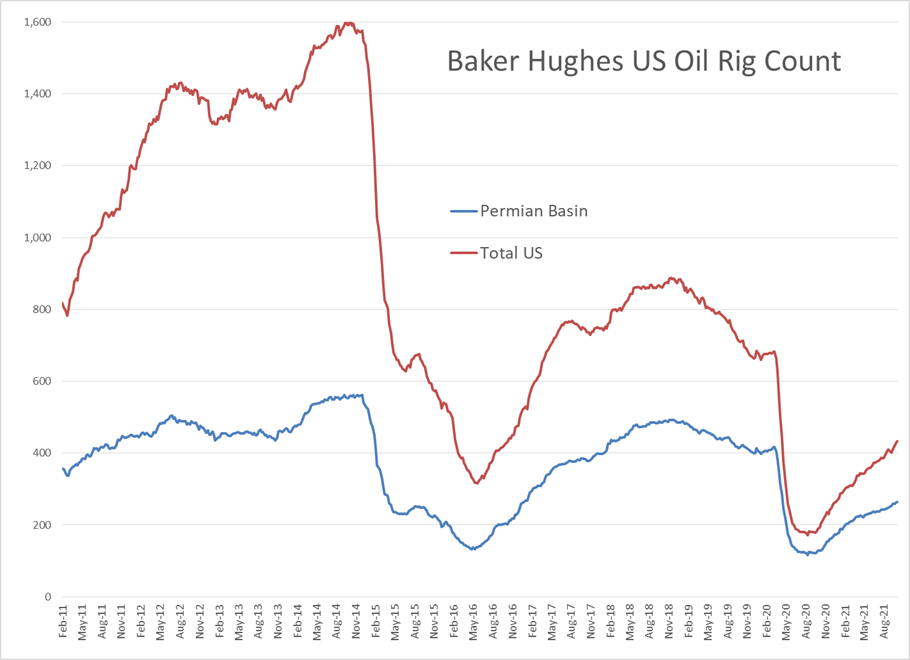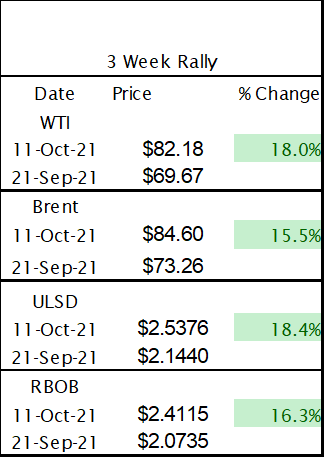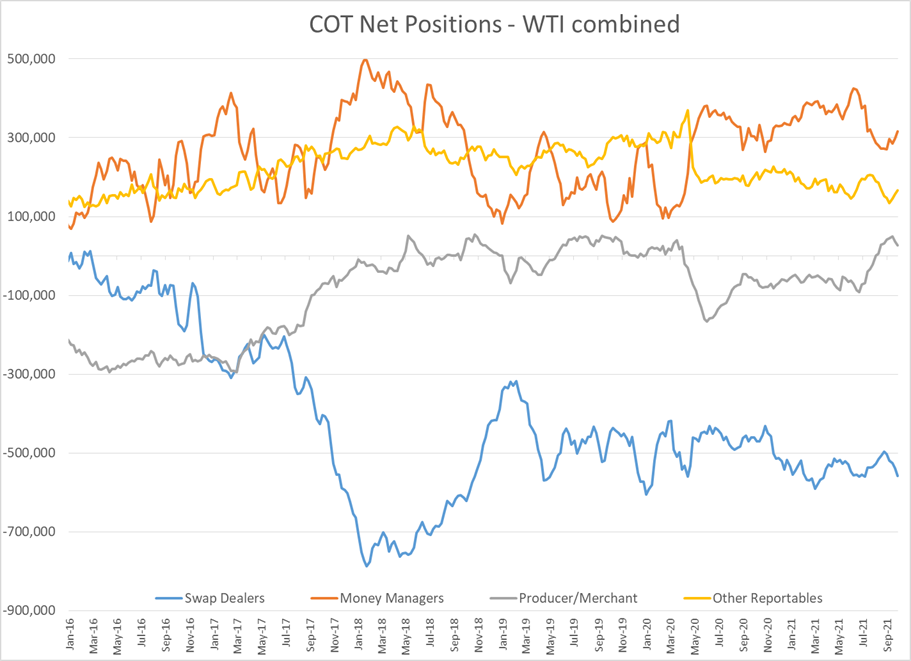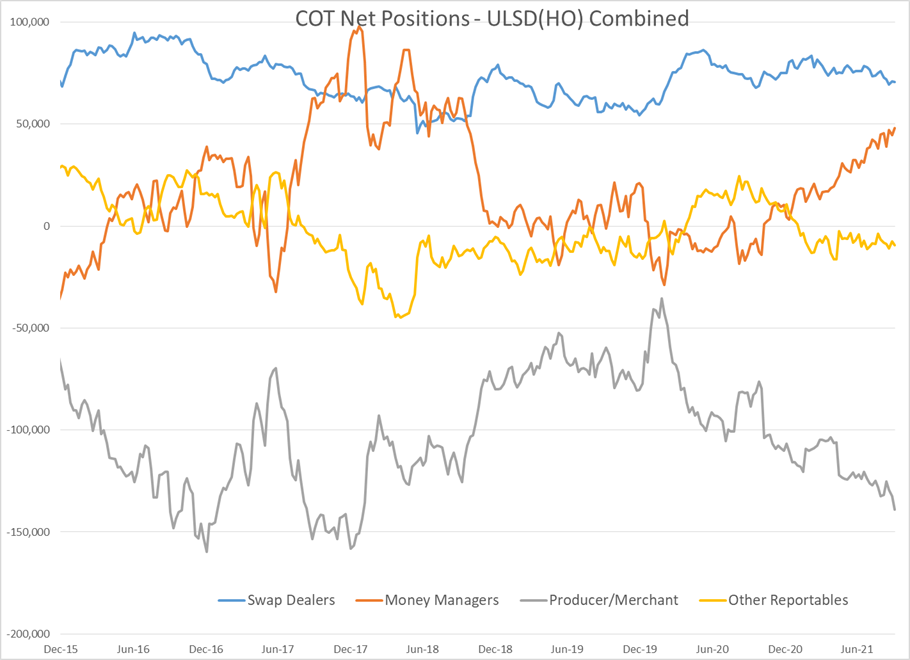Petroleum Futures Soared To Fresh 7 Year Highs

Petroleum futures soared to fresh 7 year highs overnight as the global energy supply crunch looked like it might get worse before it gets better, leaving us in this strange new world where “alternative” fuels come from oil and natural gas. Now that last week’s high trades have been taken out, there’s nothing on the charts to prevent crude making a run at the $90 mark near term, which would add around another 20 cents to refined products.
It seems just about everywhere you look these days, there’s another story of how fossil fuels are becoming both the cause and effect of climate change. Whether it’s flooding in China that’s hampering coal production, or drought in Brazil that’s creating a need for supplemental energy supplies, or even the heavy rains that have damaged multiple pipelines across the US in recent weeks, petroleum supplies are seen as both the problem, and (near term at least) the solution.
Kinder Morgan’s SE (plantation) pipeline was scheduled to restart over the weekend, after being closed for more than a week to fix a leak. The shutdown of the 2nd largest Gulf Coast to East Coast pipeline system didn’t stir too much action outside of local terminal markets that saw tight allocations, as Colonial’s main lines remain below capacity. Meanwhile, KM announced it had completed work on its “Pennsylvania Access” project that will help more product flow from Midwestern refineries to PA and NY.
Money Managers continue to add to net length in energy contracts, with the CFTC reporting the large speculator category seeing heavy short covering (bets on lower prices getting squeezed out) and new length added last week. Read here why Reuters columnist John Kemp thinks the hedge fund trade is crowded, and risking a reversal, even though the net length held by money managers is still far below 2017-2018 levels. Something else you may notice in the Commitment of Traders charts below, the “Other reportable” category of trader that made up smaller speculative traders saw a mass exodus during the chaotic trading in early 2020 (read how Chinese retail investors got burned by bad bets on WTI for a good reason why that is). If you start seeing more headlines about buying oil as a hedge against the global energy shortage – or other types of inflation – we could see an influx of those funds once again. Given the relatively small size of the energy futures arena compared to equity and currency markets, movements like that can have a huge impact on prices.
Baker Hughes reported a net increase of 5 oil rigs drilling in the US last week, 3 of which were added in the Permian basin. We’re seeing rack spreads in West Texas markets reach their highest levels since the SNOVID refinery shutdowns earlier in the year as the steady increase in drilling activity has created a steady increase in diesel demand.
There are two new tropical systems near the eastern edge of the Caribbean to keep an eye on this week, although neither one is given high odds of development by the NHC.
Click here to download a PDF of today's TACenergy Market Talk.
Latest Posts
Gasoline Futures Are Leading The Way Lower This Morning
The Sell-Off Continues In Energy Markets, RBOB Gasoline Futures Are Now Down Nearly 13 Cents In The Past Two Days
Week 15 - US DOE Inventory Recap
Prices To Lease Space On Colonial’s Main Gasoline Line Continue To Rally This Week
Social Media
News & Views
View All
Gasoline Futures Are Leading The Way Lower This Morning
It was a volatile night for markets around the world as Israel reportedly launched a direct strike against Iran. Many global markets, from equities to currencies to commodities saw big swings as traders initially braced for the worst, then reversed course rapidly once Iran indicated that it was not planning to retaliate. Refined products spiked following the initial reports, with ULSD futures up 11 cents and RBOB up 7 at their highest, only to reverse to losses this morning. Equities saw similar moves in reverse overnight as a flight to safety trade soon gave way to a sigh of relief recovery.
Gasoline futures are leading the way lower this morning, adding to the argument that we may have seen the spring peak in prices a week ago, unless some actual disruption pops up in the coming weeks. The longer term up-trend is still intact and sets a near-term target to the downside roughly 9 cents below current values. ULSD meanwhile is just a nickel away from setting new lows for the year, which would open up a technical trap door for prices to slide another 30 cents as we move towards summer.
A Reuters report this morning suggests that the EPA is ready to announce another temporary waiver of smog-prevention rules that will allow E15 sales this summer as political winds continue to prove stronger than any legitimate environmental agenda. RIN prices had stabilized around 45 cents/RIN for D4 and D6 credits this week and are already trading a penny lower following this report.
Delek’s Big Spring refinery reported maintenance on an FCC unit that would require 3 days of work. That facility, along with several others across TX, have had numerous issues ever since the deep freeze events in 2021 and 2024 did widespread damage. Meanwhile, overnight storms across the Midwest caused at least one terminal to be knocked offline in the St. Louis area, but so far no refinery upsets have been reported.
Meanwhile, in Russia: Refiners are apparently installing anti-drone nets to protect their facilities since apparently their sling shots stopped working.
Click here to download a PDF of today's TACenergy Market Talk.

The Sell-Off Continues In Energy Markets, RBOB Gasoline Futures Are Now Down Nearly 13 Cents In The Past Two Days
The sell-off continues in energy markets. RBOB gasoline futures are now down nearly 13 cents in the past two days, and have fallen 16 cents from a week ago, leading to questions about whether or not we’ve seen the seasonal peak in gasoline prices. ULSD futures are also coming under heavy selling pressure, dropping 15 cents so far this week and are trading at their lowest level since January 3rd.
The drop on the weekly chart certainly takes away the upside momentum for gasoline that still favored a run at the $3 mark just a few days ago, but the longer term up-trend that helped propel a 90-cent increase since mid-December is still intact as long as prices stay above the $2.60 mark for the next week. If diesel prices break below $2.50 there’s a strong possibility that we see another 30 cent price drop in the next couple of weeks.
An unwind of long positions after Iran’s attack on Israel was swatted out of the sky without further escalation (so far anyway) and reports that Russia is resuming refinery runs, both seeming to be contributing factors to the sharp pullback in prices.
Along with the uncertainty about where the next attacks may or may not occur, and if they will have any meaningful impact on supply, come no shortage of rumors about potential SPR releases or how OPEC might respond to the crisis. The only thing that’s certain at this point, is that there’s much more spare capacity for both oil production and refining now than there was 2 years ago, which seems to be helping keep a lid on prices despite so much tension.
In addition, for those that remember the chaos in oil markets 50 years ago sparked by similar events in and around Israel, read this note from the NY Times on why things are different this time around.
The DOE’s weekly status report was largely ignored in the midst of the big sell-off Wednesday, with few noteworthy items in the report.
Diesel demand did see a strong recovery from last week’s throwaway figure that proves the vulnerability of the weekly estimates, particularly the week after a holiday, but that did nothing to slow the sell-off in ULSD futures.
Perhaps the biggest next of the week was that the agency made its seasonal changes to nameplate refining capacity as facilities emerged from their spring maintenance.
PADD 2 saw an increase of 36mb/day, and PADD 3 increased by 72mb/day, both of which set new records for regional capacity. PADD 5 meanwhile continued its slow-motion decline, losing another 30mb/day of capacity as California’s war of attrition against the industry continues. It’s worth noting that given the glacial pace of EIA reporting on the topic, we’re unlikely to see the impact of Rodeo’s conversion in the official numbers until next year.
Speaking of which, if you believe the PADD 5 diesel chart below that suggests the region is running out of the fuel, when in fact there’s an excess in most local markets, you haven’t been paying attention. Gasoline inventories on the West Coast however do appear consistent with reality as less refining output and a lack of resupply options both continue to create headaches for suppliers.









